In today’s competitive business landscape, traditional sales tactics are constantly evolving. Companies are seeking innovative ways to acquire, retain, and grow their customer base. This is where the PLG strategy – Product-Led Growth – takes center stage. This article explores the core principles of PLG, its benefits, and how it compares to traditional sales-driven approaches.
Beyond the Brochure: The Core Tenets of a PLG Strategy
Product-Led Growth (PLG) flips the script on traditional sales models. Instead of relying on sales representatives to push products, PLG focuses Insurance Telemarketing Leads on the product itself as the primary driver of user acquisition, engagement, and conversion. Here are the core principles that define a PLG strategy:
Intuitive and Engaging Product: The cornerstone of PLG is a user-friendly, intuitive product that delivers immediate value. Users should be able to discover its features and benefits on their own, without needing extensive training or sales pitches.
Freemium or Trial Models:
PLG strategies often leverage freemium models or free trials. This allows users to experience the product’s core functionalities firsthand, fostering engagement and encouraging them to upgrade to premium plans for advanced features.
Focus on User Onboarding: Seamless onboarding experiences are crucial in PLG. Clear tutorials, in-app guidance, and well-designed user interfaces empower users to explore the product’s potential and discover its value on their own terms.
Data-Driven Optimization:
PLG thrives on data analysis. User behavior data helps identify areas for product improvement, feature prioritization, and personalization. This ensures the product continuously evolves to meet user needs and drive engagement.
Frictionless Upgrades: PLG aims to make upgrading from free plans to paid subscriptions a smooth and effortless experience. This involves highlighting the value pro within the product itself.
By prioritizing user experience, intuitive design, and data-driven optimization, PLG strategies empower products to become the driving force behind customer acquisition and growth.
Unlocking Growth Potential: Benefits of a PLG Strategy
PLG offers a range of benefits for businesses, making it a compelling alternative to traditional sales-driven models:
Reduced Customer Acquisition Costs: By focusing on organic product discovery and user engagement, PLG can significantly lower costs associated with traditional sales and marketing efforts.
Improved Customer Retention: When users discover value within the product itself, they are more likely to become loyal customers. PLG fosters product adoption and increases customer retention rates.
Scalable Growth:
A well-designed PLG strategy can generate a flywheel effect. Satisfied users become brand advocates, attracting new users organically through positive word-of-mouth and product reviews.
Data-Driven Product Development: PLG emphasizes user data analysis, allowing companies to prioritize features and functionalities that resonate with their target audience. This ensures product development aligns with user needs and drives product-market fit.
Enhanced Brand Image: PLG fosters a user-centric approach, demonstrating a focus on building a valuable product rather than aggressive sales tactics. This can lead to a more positive brand image and increased customer trust.
By prioritizing user experience and building a product that speaks for itself, PLG empowers businesses to achieve sustainable growth and build a loyal customer base.
PLG vs. Traditional Sales: A Tale of Two Approaches
PLG offers a distinct advantage over traditional sales models:
Focus: PLG focuses on the product as the primary driver of growth, while traditional sales rely on salespeople to push products.
User Acquisition: PLG leverages organic product discovery and user engagement, while traditional sales often rely on outbound marketing and cold calls.
Customer Journey:
PLG empowers users to explore the product at their own pace, while traditional sales involve a structured sales funnel with pre-defined steps.
Scalability: PLG offers a more scalable growth model, as satisfied users can organically attract new users. Traditional sales rely on scaling the sales team, which can be resource-intensive.
While traditional sales still have a place in some industries, PLG offers a compelling alternative for businesses seeking a user-centric, data-driven approach to customer acquisition and growth.
Conclusion: The User in the Driver’s Seat
PLG represents a shift in the way businesses approach Lead generation process in saLes customer acquisition and growth. By prioritizing user experience and empowering users to discover the product’s value on their own, PLG fosters a win-win situation. Businesses experience sustainable growth, and users benefit from an intuitive product that meets their needs. In the ever-evolving business landscape, PLG offers a strategic approach for companies seeking.



